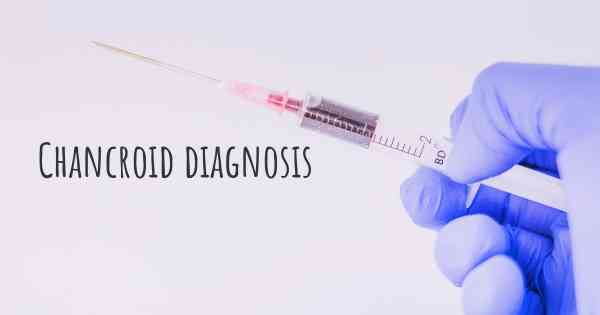4
How is Chancroid diagnosed?
See how Chancroid is diagnosed. Which specialists are essential to meet, what tests are needed and other useful information for the diagnosis of Chancroid

Chancroid is a sexually transmitted infection caused by the bacterium Haemophilus ducreyi. Diagnosing chancroid involves a combination of clinical evaluation, laboratory tests, and exclusion of other possible causes of genital ulcers.
Clinical Evaluation: A healthcare provider will begin by conducting a thorough physical examination, focusing on the genital area. They will look for characteristic signs and symptoms of chancroid, which include painful genital ulcers, enlarged and tender lymph nodes in the groin area (buboes), and the presence of pus or discharge from the ulcers. The healthcare provider may also inquire about the patient's sexual history and any recent high-risk sexual encounters.
Laboratory Tests: To confirm the diagnosis of chancroid, laboratory tests are necessary. The most common method is to collect a sample of fluid or tissue from the ulcer for analysis. This can be done by gently swabbing the ulcer surface or by aspirating fluid from the base of the ulcer. The sample is then sent to a laboratory for further examination.
In the laboratory, several tests can be performed to identify the presence of Haemophilus ducreyi. These tests may include:
1. Gram stain: This test involves staining the collected sample and examining it under a microscope. The characteristic appearance of Haemophilus ducreyi bacteria can be observed, aiding in the diagnosis.
2. Culture: The collected sample can be cultured in a specialized medium that promotes the growth of Haemophilus ducreyi. If the bacteria grow in the culture, it confirms the diagnosis.
3. PCR (Polymerase Chain Reaction): This molecular technique amplifies the genetic material of Haemophilus ducreyi, making it easier to detect even in small amounts. PCR is highly sensitive and specific, providing a rapid and accurate diagnosis.
Exclusion of Other Causes: It is crucial to rule out other possible causes of genital ulcers, such as herpes simplex virus (HSV) or syphilis. This may involve additional laboratory tests, including blood tests for specific antibodies or DNA tests for viral or bacterial pathogens.
In conclusion, diagnosing chancroid involves a combination of clinical evaluation, laboratory tests (such as gram stain, culture, and PCR), and exclusion of other potential causes. It is important to consult a healthcare provider for proper evaluation and diagnosis if chancroid is suspected.
Diseasemaps








